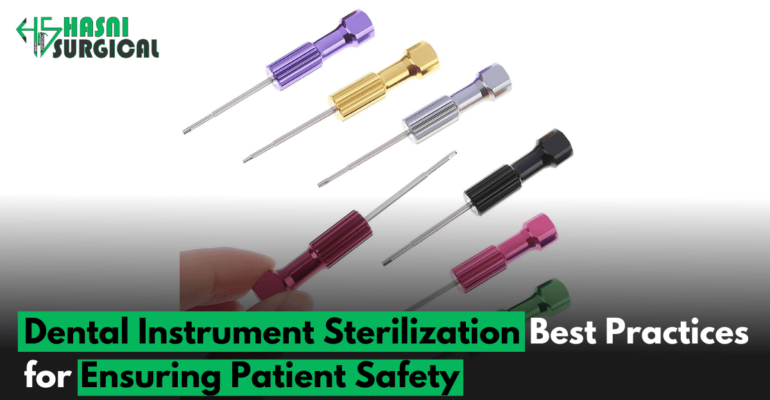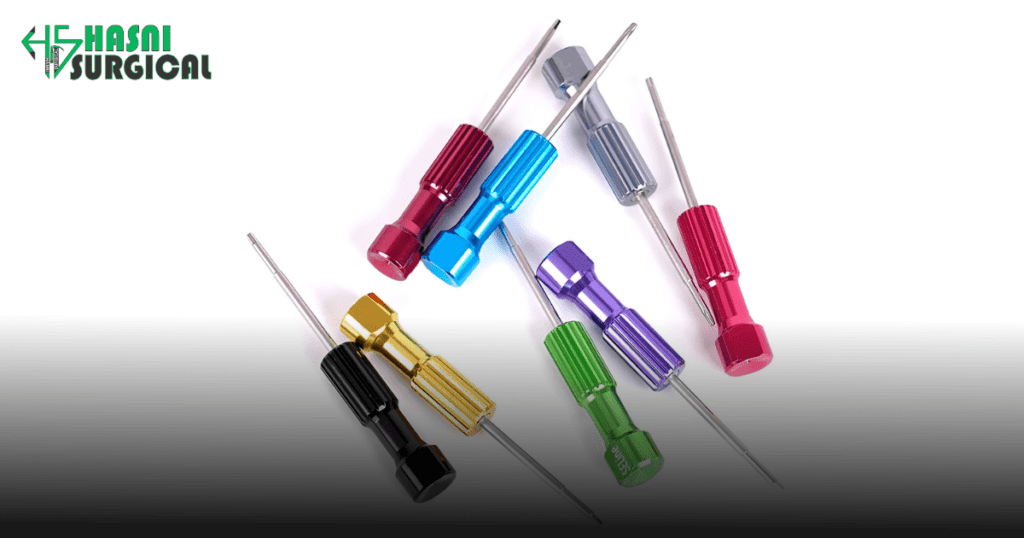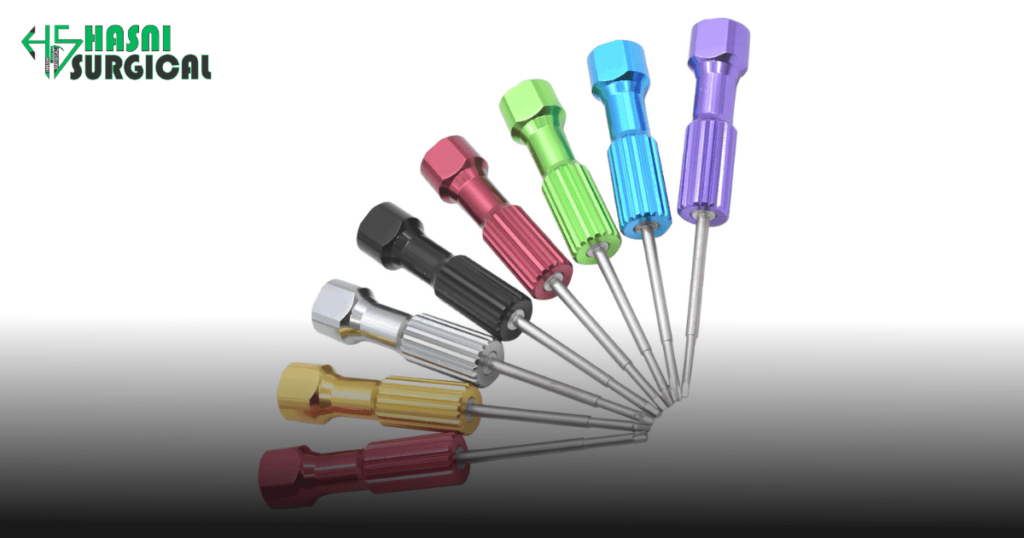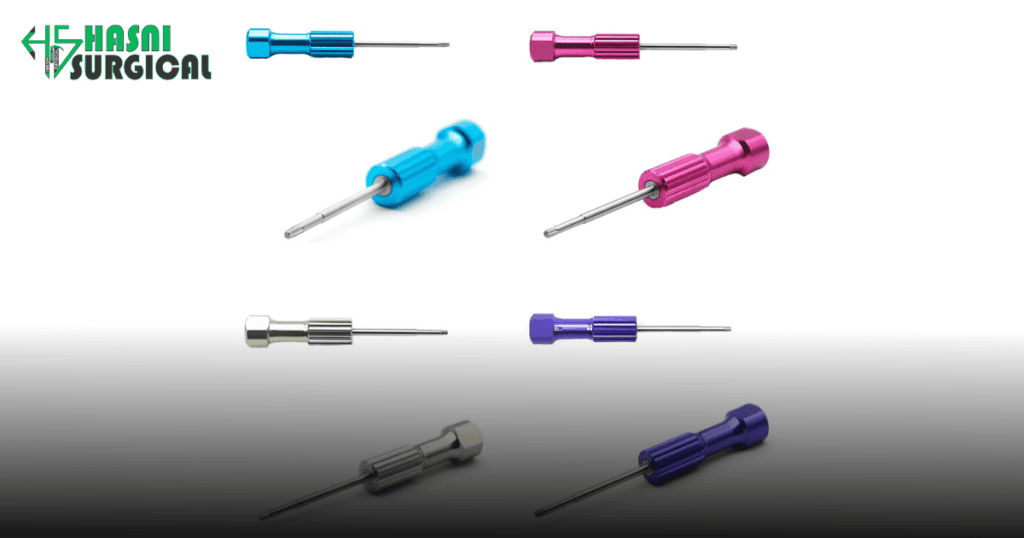Dental Instrument Sterilization: Best Practices for Patient Safety
June 22, 2024 2024-11-21 7:31Dental Instrument Sterilization: Best Practices for Patient Safety

Dental Instrument Sterilization: Best Practices for Patient Safety

Dental Instrument Sterilization
In the world of dental healthcare, ensuring the safety of patients through proper instrument sterilization is absolutely crucial. It’s not just about following rules; it’s about protecting people’s health and earning their trust. Imagine visiting a dentist who meticulously cleans and sterilizes every instrument after each use. This thorough process isn’t just a routine; it’s a commitment to your well-being.
Effective sterilization begins with a thorough cleaning. After each patient, instruments are carefully rinsed to remove any debris. Then, they go into an ultrasonic cleaner, where high-frequency sound waves thoroughly dislodge any remaining particles that might be hidden in crevices. This step ensures that even the smallest contaminants are removed before sterilization begins.
The next critical step is sterilization itself. Most dental offices use autoclaves, which are machines that sterilize instruments using steam under pressure. This process effectively kills bacteria, viruses, and fungi, making sure that instruments are not only visually clean but also safe from harmful microorganisms that could cause infections.
Also read: Revision Total Joint Arthroplasty Instrumentation Guide

Following guidelines from organizations like the Centers for Disease Control and Prevention (CDC) and the Occupational Safety and Health Administration (OSHA) is essential. These guidelines provide specific protocols for cleaning, disinfection, and sterilization to minimize the risk of infections spreading in dental settings. Dental professionals undergo rigorous training to ensure they understand and follow these protocols consistently.
Why Sterilization Matters check reason Why?
Dental instruments frequently come into contact with saliva, blood, and tissue, which makes them potential carriers of harmful microorganisms. Inadequate sterilization can lead to cross-contamination and infection transmission, endangering both patients and healthcare providers. Thus, rigorous sterilization processes are essential to eliminate all forms of microbial life, including bacteria, viruses, and fungi, thereby ensuring a safe and hygienic environment for dental care.
Pre-Sterilization Procedures

1. Cleaning First in Sterilization
Effective sterilization starts with thorough cleaning. This step involves removing organic material and debris from the instruments, which is crucial as residual debris can shield microorganisms from the sterilizing agent.
- Manual Cleaning: Use a brush and an enzymatic cleaner to scrub instruments, paying special attention to intricate areas. Rinse thoroughly to remove cleaning agents.
- Ultrasonic Cleaning: Utilize ultrasonic cleaners to dislodge debris from hard-to-reach areas using high-frequency sound waves. This method is especially effective for instruments with complex geometries.
- Rinsing and Drying: After cleaning, rinse instruments with water to remove cleaning agents and dry thoroughly to prevent corrosion.
2. Inspection and Packaging
After cleaning, visually inspect the instruments for debris and damage. Repair or discard any compromised instruments. Then, package them for sterilization.
- Packaging Materials: Use sterilization pouches or wraps that allow steam or gas penetration. Ensure the packaging matches the sterilization method.
- Sealing: Seal the packages securely to maintain sterility after the sterilization process.
Sterilization Methods

Choosing the appropriate sterilization method depends on the type of instruments and the nature of their use. Here are the primary methods employed in dental practices:
1. Autoclaving (Steam Sterilization)
Autoclaving uses pressurized steam for sterilization, widely recognized as the most effective method.
- Procedure: Instruments are steam-sterilized between 121°C (250°F) and 134°C (273°F).
- Effectiveness: This method effectively destroys all forms of microbial life, including spores.
- Cycle Times: Typical cycle times range from 15 to 30 minutes, depending on the load size and temperature.
2. Dry Heat Sterilization
Dry heat sterilization uses high temperatures without moisture, making it suitable for heat-sensitive instruments.
- Procedure: Instruments are heated to temperatures ranging from 160 to 180 °C (320 to 356 °F).
- Effectiveness: It requires longer exposure times but is effective for heat-resistant materials.
- Cycle Times: Sterilization can take from 1 to 2 hours.
3. Chemical Vapor Sterilization
This method employs a mixture of chemicals to achieve sterilization at lower temperatures.
- Procedure: A mixture of alcohol, formaldehyde, and water is used at 131°C (270°F) under pressure.
- Effectiveness: For materials vulnerable to steam damage, it also prevents the rusting of metal instruments.
- Cycle Times: Typically takes 20 to 40 minutes.
4. Ethylene Oxide Gas Sterilization
Ideal for heat-sensitive instruments, this method uses ethylene oxide gas to sterilize at low temperatures.
- Procedure: Instruments are exposed to ethylene oxide gas in a chamber for sterilization.
- Effectiveness: It is highly effective but requires longer aeration to remove toxic residues.
- Cycle Times: Can take several hours, with additional time needed for aeration.
Post-Sterilization Protocols
1. Storage and Handling
Proper storage and handling are crucial to maintaining the sterility of sterilized instruments.
- Storage: Store instruments in a clean, dry area. Use labeled containers with sterilization dates and contents.
- Handling: Handle instruments using clean gloves and aseptic techniques. Avoid touching critical areas to prevent contamination.
2. Monitoring and Quality Control
Ongoing monitoring and quality control are essential to ensuring the effectiveness of sterilization processes.
- Biological Indicators: Use spore tests to validate sterilization cycles. If spores, resistant to sterilization, are killed, the process is effective.
- Chemical Indicators: Utilize both external and internal chemical indicators. Here’s a shortened version: “External indicators confirm exposure to sterilization conditions, while internal indicators confirm penetration.”
- Mechanical Indicators: Autoclaves and sterilizers should have cycle monitors that record parameters like time, temperature, and pressure. Regularly review these logs to ensure proper operation.
Adhering to Regulatory Standards
Compliance with regulatory guidelines is vital for maintaining a safe practice.

1. OSHA and CDC Guidelines
Follow protocols set by the Occupational Safety and Health Administration (OSHA) and the Centers for Disease Control and Prevention (CDC). These guidelines provide comprehensive procedures for instrument processing, handling, and storage to minimize infection risks.
2. Accreditation Standards
Comply with standards from accreditation bodies like the Joint Commission and the American Dental Association (ADA). Regular audits and reviews help ensure ongoing compliance and patient safety.
Continuous Training and Education
Maintaining a well-informed team is key to effective sterilization practices.
1. Staff Training
Provide regular training for dental staff on sterilization procedures, updates to guidelines, and equipment operation. Ensure staff are knowledgeable about new technologies and best practices.
2. Updates and Refresher Courses
Encourage participation in refresher courses and updates on the latest sterilization techniques and regulatory changes. Attendance at workshops and seminars can also enhance staff knowledge and skills.
Conclusion
Implementing best practices for dental instrument sterilization is fundamental to patient safety and the success of a dental practice. By adhering to a structured approach for cleaning, sterilizing, and handling instruments and keeping abreast of regulatory standards and advancements, dental professionals can provide a safe and hygienic environment for their patients, ensuring the highest levels of care.

